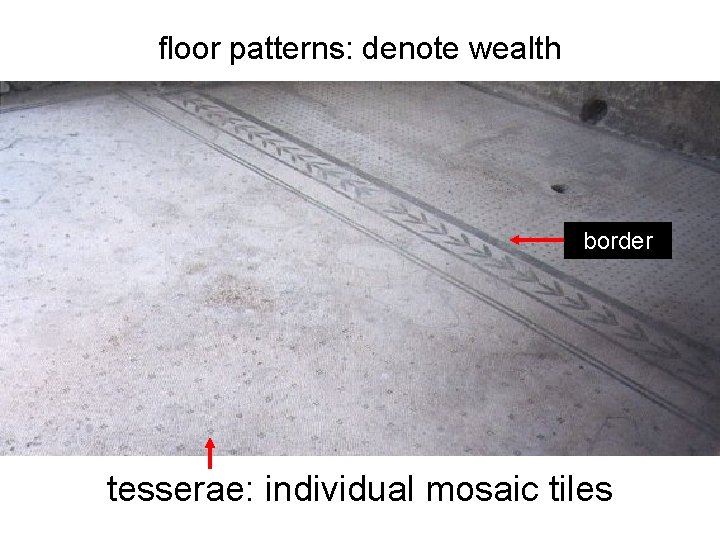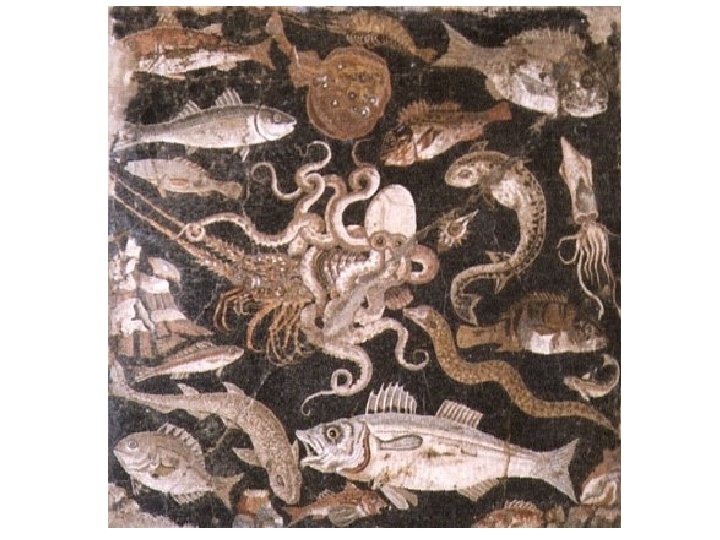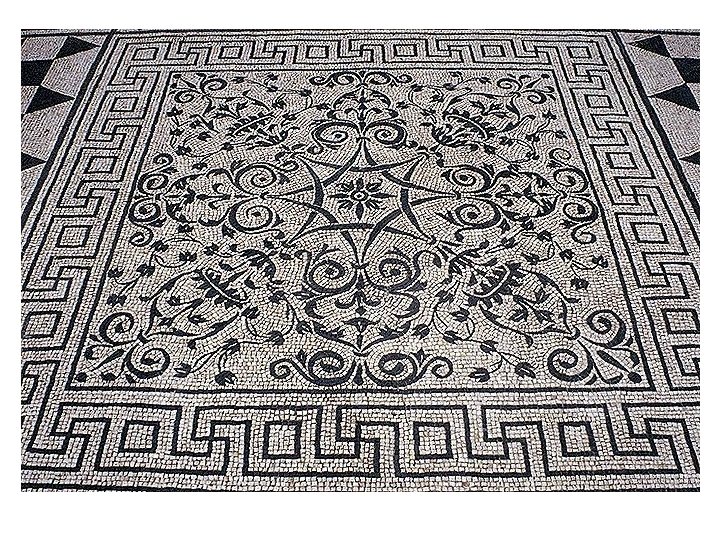The Roman Empire 218 BCE The Roman Empire

The Roman Empire 218 BCE

The Roman Empire 350 CE

trabeated construction • limited span due to stones poor tensile strength • requires a considerable amount of vertical structure

The Aqueducts at Nimes, France

1: 3000

arch is the basic module for Roman arcuated construction


arch works by exploiting the stone’s compressive strength

…an arch thrown down a straight axis groin vault: a perpendicular intersection of 2 barrel vaults

a dome is an arch spun on a central vertical axis

Pantheon Rome, Hadrian, 100 -125 CE

Pantheon, Rome, Hadrian, 100 -125 CE—“Marcus Agrippa, son of Lucius, Consul for the third time, built this” third iteration—originally built as a temple to all the Gods

Pantheon, Rome, Hadrian, 100 -125 CE

Pantheon, Rome, Hadrian, 100 -125 CE height to the oculus and the diameter of the interior circle are the same, 43. 3 meters (142 ft)


do you remember what these are called?


coffered ceiling coffers were poured in molds, probably on the temporary scaffolding oculus admits only light

marble comes from Egypt, Numidia, Asia minor, & Gaul—shows span of Roman Empire

350 CE

Appian Way • cobbled roadway • constructed more than 2200 years ago • primary route from Rome to Greece—transport of goods

Pantheon, Rome, Hadrian, 100 -125 CE


Pantheon, aedicule, Rome, Hadrian, 100 -125 CE

Pilaster Column

IBM Tower Philip Johnson 1987

Pilaster Column

Baths of Caracalla Rome, Hadrian, 100125 CE

could hold an estimated 1, 600 bathers

A-Calidarium B-Nymphaeum C-Great Hall D-Frigidarium (Swimming Pool) E-Courts G-Palaestra H-Lecture Halls I-Vestibules L-Dressing Rooms N-Steam Baths Q-Lounges S-Gymnasia T-Study Rooms V-Nymphaea

Sequence of Spaces Calidarium (Hot) Tepidarium (Warm) Gymnasium Frigidarium (Cold) Massage Natatio (Pool) Dressing Rooms

section cut of Baths of Caracalla • more a leisure centre than just a series of baths • second to have a public library within the complex

Interior of Baths of Caracalla

Basilica Ulpia Rome, Trajan, 100 -125 CE reconstruction drawing of the Forum of Trajan shows: (1) (2) (3) (4) the triumphal arch at the entrance statue of the emperor on horseback hemicycles Basilica Ulpia (a law court) (5) two libraries (6) Trajan's Column (7) his temple

Basilica Ulpia large roofed hall erected for transacting business and disposing of legal matters— largest and most lavish in Rome and would have been regarded as a model of its type


"The Basilica Ulpia may not have been a building of any profound architectural originality. But there are few monuments of antiquity that enjoyed a greater and more enduring prestige, or that did more to shape the subsequent course of architectural history. " Ward-Perkins, Roman Imperial Architecture

• usually contained interior colonnades that divided space • giving aisles or arcaded spaces at one or both sides • with an apse at one end (or less often at each end) where the magistrates sat, often on a slightly raised dais

Interior central aisle tended to be wide and was higher than the flanking aisles, so light could penetrate through the clerestory windows


Domus Aurea Nero’s Golden House, Tivoli, 64 -80 CE The main dining room was a rotunda, which revolved slowly, day and night, like the vault of heaven itself. There were baths with a lavish supply of both sea-water and sulphur water.

Nero’s Golden House, Domus Aurea, Tivoli, 64 -80 CE When the palace was completed on this sumptuous scale, Nero’s approval as he dedicated it was confined to the remark ‘At last I can begin to live like a human being’ (Suetonius, Nero 31)

Jack Arch Nero’s Golden House, Domus Aurea, Tivoli, Severus and Celer, 64 -80 CE

Nero’s Golden House, Domus Aurea, Tivoli, Severus and Celer, 64 -80 CE

Hadrian’s Villa Tivoli, 118 -133 CE • complex of over 30 buildings • included palaces, several thermae, theatre, temples, libraries, state rooms and quarters for courtiers, praetorians and slaves

Maritime Villa Canopus & Serapeum Site Plan of Hadrian’s Villa retreat from Rome for Roman Emperor Hadrian in the early 2 nd century

canopus (pool) Serapeum (grotto)

Hadrian’s Villa, Canopus, Tivoli, 118 -133 CE

evidence of the expanse of the Roman Empire Egyptian Alligator Greek Caryatid


covered corridor or passageway– extensive network of underground tunnels cryptoporticus

Mosaic: Landscape with lion, boars, deer c. 124

Mosaic: Nile scene c. 124

Island Villa

Hadrian’s Villa, Island Villa, Tivoli, 118 -133 CE probably used by emperor as a retreat from the busy life at the court

Hadrian’s Villa, Island Villa, Tivoli, 118 -133 CE


curved barrel vault



79 CE Vesuvius erupts! evidence of previous destruction



Pompeian Forum and surrounding area

Pompeii discovered in 1738

Pompeian Store Fronts often mask the residential environment

symbols = type of store goat = dairy grapes = wine

House (Domus) Pompeii, before 79 AD


House (Domus) Plan, Pompeii, before 79 AD



vestibulum or fauces (throat)

polylithic construction

entry mosaic in the House of the Vetii

atrium • large airy room • lighted by an opening in the roof • the formal room where guests were received and clients assembled to wait for their customary morning visits to their patron • also a room for family occasions

colored panels, graceful patterns, mythological motifs

cupids playing hide and seek

tablinum • open on two sides • family records were stored • elite families would display the imagines— busts of famous ancestors • master of the house, the paterfamilias, would greet his many clients on their morning visits

lattice style wooden door folding doors

chest of family finances

tabernae or shops

Cubiculum • on the upper story • in the interior of the house • often functioned as bedrooms Lekthos w/ fulcra, Cubiculum, 100300 CE • small rooms off the atrium used for private meetings, libraries, etc.

Etruscan Sarcophagus, 650 -80 BCE

culina braziers

House (Domus) Plan w/ Peristyle Garden, Pompeii, before 79 CE


House of the Vetii

view into the Peristyle Garden

House (Domus) - Peristyle Garden, Pompeii, before 79 AD

Lararium altar for the Household gods (lares) aedicule

House of the Faun

frescoes, Pompeii, before 79 CE

illusions of depth painting of a fresco from Pompeii

fanciful architecture & attenuated columns painting of a fresco from Pompeii

illusions of nature

fish pond

triadic color scheme: red, yellow, blue

frieze body dado

Roman Domestic Furniture 100 -300 AD

cathedra, 100 -300 CE

monopdia Stone Tables, 100 -300 CE trestle leg

lamps, 100 -300 CE

curule, 100 -300 CE

floor patterns: denote wealth border tesserae: individual mosaic tiles


geometry illusion patterns, House of the Faun

- Slides: 108